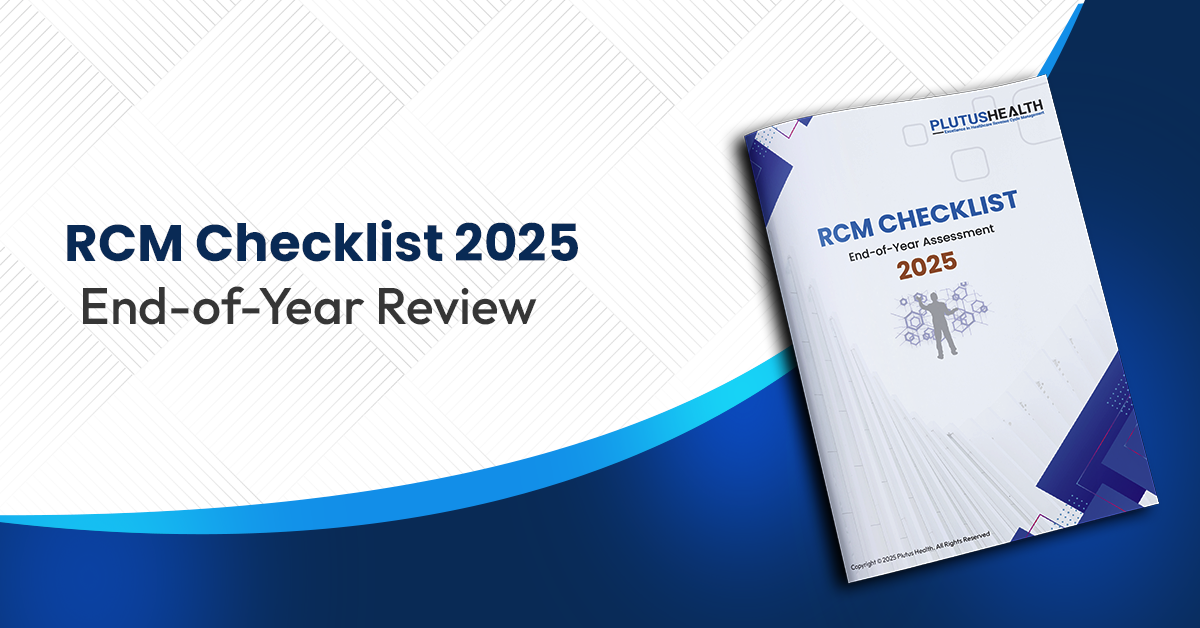Telehealth Billing & Coding guidelines
Telehealth (aka telemedicine) services substitute for an ‘in-person’ encounter. The reporting of these services varies by payer and state regulations. Depending on where the client is located during the telehealth encounter, telehealth services may make up to two distinct services. The different coding and billing requirements for hosting facilities and performing physicians/providers are outlined in the below table.
Regarding some of the terms in the table, explanations are also given below.

Hosting facility: Originating site
Telehealth services include both an originating site and a distant site. The former is the location of the client at the time the service is being furnished through a telecommunications system.
A telehealth facility fee is paid to the originating site. Claims for this fee should be submitted using HCPCS code Q3014:"Telemedicine originating site facility fee."
Regardless of their location, providers qualify as originating sites if they were participating in a Federal telemedicine demonstration project approved by (or getting funding from) the U.S. Department of Health & Human Services as of December 31, 2000.
An originating site’s geographic eligibility is based on the area’s status as of December 31 of the prior calendar year. This eligibility then continues for a full calendar year.
Authorized originating sites include:
- Hospitals
- Critical Access Hospitals (CAHs)
- Rural Health Clinics (RHCs)
- Federally Qualified Health Centers(FQHC)
- Physician and practitioner offices
- Skilled Nursing Facilities (SNFs)
- Community Mental Health Centers(CMHCs)
- Renal Dialysis Facilities
- Hospital-based or CAH-based Renal Dialysis Centers (including satellites)
- Homes of beneficiaries with End-Stage Renal Disease (ESRD) getting home dialysis
- Mobile Stroke Units
Performing Physician/Provider: Distant site/remote site
The distant site refers to the site where the physician or other licensed practitioner delivering the telehealth service is located.
Subject to state law, the following distant site practitioners can furnish and get payment for covered telehealth services:
- Physicians
- Nurse practitioners (NPs)
- Physician assistants (PAs)
- Nurse-midwives
- Clinical nurse specialists (CNSs)
- Certified registered nurse anesthetists
- Registered dietitians or nutrition professionals
- Clinical psychologists (CPs) and clinical social workers (CSWs)
o They cannot bill Medicare for psychiatric diagnostic interview examinations with medical services or medical evaluation and management services
o They cannot bill or get paid for Current Procedural Terminology (CPT) codes 90792, 90833, 90836 and 90838
Place of service (POS) code
When telehealth services are being provided, healthcare providers must bill the E&M code with POS code 02. Telehealth services not billed with 02 will be denied by the payer, regardless of insurance carrier (Medicare or others). The Centers for Medicare and Medicaid Services (CMS) requires that the POS code for the hosting facility align with its type. So for an outpatient hospital facility, use POS 22; use POS 11 for a private office, and so on. Check with your payers if you plan to bill out for the hosting facility service.
Modifiers
Claims for professional services should be submitted using the appropriate service code and the i) 95 modifier or ii) GQ modifier.
i) 95 modifier: Append this modifier to an appropriate CPT code when billing a commercial insurance company for a real-time interaction between a physician(or other qualified healthcare professional) and a patient located at a distant site from them.
ii) GQ modifier: Providers participating in the federal telemedicine demonstration programs in Alaska or Hawaii must submit the appropriate CPT or HCPCS code for the professional service along with the GQ modifier.
Furthermore,
iii) GT modifier: This modifier is to be used only when directed by a payer in lieu of modifier 95. Medicare stopped the use of modifier GT in 2017 when the place of service code 02 (telehealth) was introduced. If a payer rejects a telehealth claim and the 95 modifier is not appropriate, ask about the GT modifier.
Tips for telehealth services billing and payment
- Submit claims using the appropriate CPT or HCPCS code
- For telehealth services performed through asynchronous telecommunications system, add the telehealth GQ modifier with the professional service CPT or HCPCS code
- Submit telehealth services claims using Place of Service (POS) code 02-Telehealth
- Bill covered telehealth services to your Medicare Administrative Contractor (MAC)
Telehealth originating sites billing and payment
HCPCS Code Q3014 describes the Medicare telehealth originating sites facility fee. Bill your Medicare Administrative Contractor (MAC)for the separately billable Part B originating site facility fee.
Medicare updates
Considering the current COVID-19 outbreak, Medicare has announced new updates to existing Telemedicine rules and expanded telehealth under the 1135 waiver. Starting March 6, 2020, Medicare can pay for office, hospital, and other visits furnished via telehealth across the country, including in the patient’s place(s) of residence. These Medicare telehealth visits are considered the same as in-person visits and are paid at the same rate as regular, in-person visits. Prior to this waiver Medicare could only pay for telehealth on a limited basis.
With regard to virtual check-ins and e-visits, these services can only be reported when the billing practice has an established relationship with the patient. Unlike Medicare telehealth visits which require audio and visual capabilities for real-time communication, virtual check-ins can be conducted with a broader range of communication methods. Medicare coinsurance and deductible would generally apply to e-visit services.
OIG updates
The HHS Office of Inspector General(OIG) is also providing flexibility for healthcare providers (including doctors, nurse practitioners, clinical psychologists and licensed clinical social workers) to reduce or waive cost-sharing for telehealth visits paid by federal healthcare programs.
Resources
A Brief Introduction to the World of Telehealth
Applied Behavior Analysts Using Technology to Provide Therapy Remotely
Applied Behavior Analysis in the Telebehavioral Health Setting
Telehealth : ABA’s New Frontier
Important COVID-19 Update : Use of Telehealth
Liked the blog? Share it
FAQs


ABA providers are grappling with high staff turnover (up to 65%), rising burnout, administrative overload, and stagnant reimbursement rates. These challenges directly impact care continuity, clinical outcomes, and operational performance.


Operational inefficiency costs ABA teams up to 10 hours per staff member per week, contributing to burnout, denied claims, and longer accounts receivable (A/R) cycles. These inefficiencies ultimately result in reduced revenue and patient dissatisfaction.


Burnout leads to costly turnover, lower client retention, and decreased productivity. Recruiting and replacing a BCBA or RBT can cost up to $5,000 per hire, plus months of lost revenue and disruption to morale.


High-performing ABA organizations invest in clear career pathways for BCBAs and RBTs, align compensation with market benchmarks, and foster peer-led mentorship, flexible schedules, and wellness programs.


Automation tools like Plutus Health's Zeus streamline eligibility verification, denial management, and billing, reducing manual workloads by 5–10 hours weekly per clinician and improving clean claim rates by 95%.


Outsourcing revenue cycle management can improve collections, reduce denials by up to 30%, and free clinicians from billing-related admin tasks, resulting in better client care and financial outcomes.


One $200 million ABA network partnered with Plutus Health to automate eligibility and accounts receivable (A/R) processes. The result: $2M reduction in legacy A/R and a 97% Net Collection Rate.


By improving operational efficiency, investing in technology, and ensuring workforce stability, ABA leaders can align outcomes with reimbursement. Plutus Health supports this transition with scalable RCM and automation strategies.
FAQs


ABA therapy billing is the process of submitting claims to insurance or Medicaid for Applied Behavior Analysis services provided to individuals with autism or developmental disorders. It includes using correct CPT codes, proper documentation, and adherence to payer-specific policies.


Common CPT codes for ABA therapy in 2025 include:
- 97151 – Assessment and treatment planning
- 97153 – Direct therapy with the patient
- 97155 – Supervision and modification of behavior plan
- 97156 – Family adaptive training
- Always check with payers for any annual changes.


To bill Medicaid for ABA services, providers must ensure credentialing is complete, services are pre-authorized, and claims use the correct codes and modifiers. Medicaid requirements vary by state, so always follow state-specific billing rules.


Common ABA billing mistakes include:
- Incorrect or missing CPT codesplan
- Lack of documentation or treatment
- Uncredentialed providers rendering services
- Submitting duplicate or late claims


Without proper credentialing, providers can’t get reimbursed. Insurance and Medicaid require that BCBAs, RBTs, and organizations are credentialed and contracted. Delays in credentialing often cause revenue losses and claim rejections.
FAQs


CMS proposes a 2.4% increase in Medicare ASC payment rates, contingent on meeting ASCQR quality reporting requirements. Plutus Health helps ASCs meet these compliance benchmarks by integrating quality reporting data into RCM workflows, ensuring eligibility for full payment updates.


The ASC Covered Procedures List will expand by 547 procedures, including cardiology, spine, and vascular surgeries. Plutus Health supports expansion into new service lines by customizing RCM processes for high-acuity procedures, minimizing claim denials during the transition.


Site-neutrality narrows the payment gap with hospital outpatient departments, enhancing ASCs' cost-efficiency appeal. Plutus Health helps leverage this advantage in payer negotiations by providing performance dashboards and cost-justification analytics to secure stronger reimbursement terms.


Complex procedures increase denial risk and slow cash flow. Plutus Health's automation-first RCM model delivers 95%+ clean claim rates, reduces A/R days, and safeguards margins, even as your case mix becomes more complex.
FAQs


A hybrid RCM model combines in-house tasks like scheduling, intake, and patient communication with outsourced billing support for claims, denials, and A/R follow-up. Plutus Health enables this model with automation and expert teams.


Frequent CPT code updates, variable session lengths, high no-show rates, and sensitivity around patient collections make behavioral health billing uniquely challenging. Hybrid RCM helps strike a balance between compliance and patient care.


Tasks requiring patient interaction—like intake, eligibility checks, copay collection, and documentation—are best kept in-house, while backend processes can be outsourced.


Outsourcing denial management, claims scrubbing, and payment posting improves clean claim rates, reduces A/R days, and scales capacity without adding staff.


Plutus Health delivers 97%+ clean claim rates, AI-powered denial prediction, and 48-hour claim turnaround. Our hybrid RCM solutions provide behavioral health CFOs with visibility and control, while enhancing financial performance.
FAQs


Payment complexity, high out-of-pocket costs, increasing denials, and value-based care requirements are pushing providers toward more transparent, tech-supported payment systems.


Patients now act like consumers. They expect clear cost estimates, simple bills, digital payment options, and flexible financing.


AI, automation, and digital tools streamline estimates, reduce denials, support payment plans, and allow faster collections through mobile and online payments.


Complex billing questions, insurance confusion, and financial stress require a compassionate approach. Advocates guide patients and protect trust in clinical care.


Plutus Health supports providers with AI-driven denial prevention, predictive analytics, digital payment tools, patient financing, and a seamless platform, such as AnodynePay.






















































